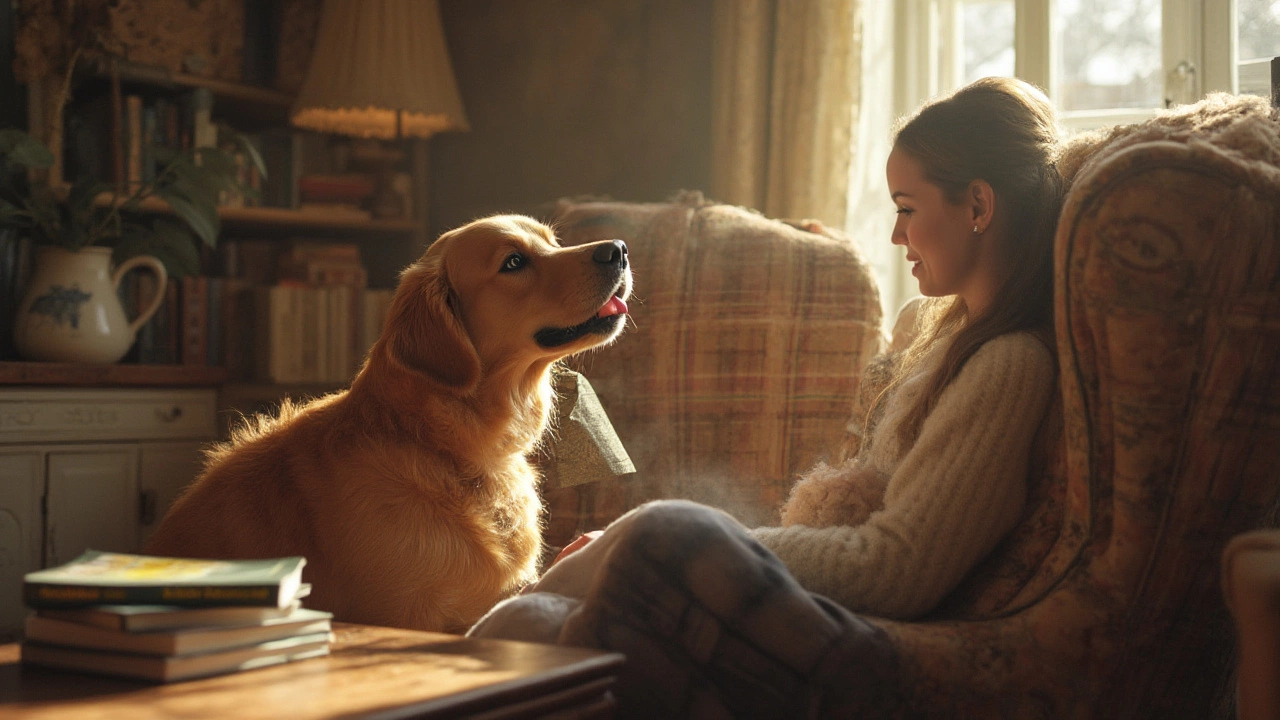Dog Communication: Simple Ways to Understand Your Pup
Ever wonder what your dog is trying to tell you when it wags its tail or lets out a whine? Dogs use a mix of body moves and sounds to share how they feel. The good news is you don’t need a degree in animal science to pick up the basics – just a bit of observation and a few handy tips.
Watch the Tail, Ears, and Eyes
The tail is a classic signal. A loose, wiggly wag usually means your dog is happy and relaxed. If the tail is high and stiff, the dog might be alert or a bit nervous. Ears that are forward show interest, while ears flattened back can signal fear or submission. Eyes matter too – soft, blinking eyes are a sign of calm, whereas a hard stare often means the dog is focused or guarding something.
Combine these cues for a clearer picture. For example, a high tail, ears forward, and a fixed stare usually mean the dog is on guard – think a neighbor’s cat or a stranger at the door. If the tail is low, ears are back, and the eyes look away, the pup is likely scared and may need a gentle approach.
Listen to the Sounds
Dogs don’t just bark; they whine, growl, sigh, and even howl. A short, high-pitched bark often means excitement – maybe you’re about to open the fridge. A low, drawn‑out growl can be a warning, especially if paired with a stiff body. Whines usually signal a need – a bathroom break, hunger, or anxiety. Pay attention to the context: a whine while you’re putting on shoes probably means “let’s go for a walk!”.
One useful trick is to match the tone with the situation. If the bark is rapid and repetitive, it’s likely a call for attention. A single, deep bark followed by a calm posture often means “I see something, but I’m okay”.
Understanding these signals helps you respond correctly, which builds trust. When you meet a dog’s need quickly – whether it’s a quick bathroom break or a soothing pet – the dog learns that you’re reliable, and communication gets smoother.
Try a quick observation exercise today: during a walk, note three body cues and one sound you notice. Ask yourself what the dog might be feeling. Over a few days you’ll start spotting patterns without even thinking about it.
Remember, every dog is unique. Breed traits, age, and past experiences shape how a dog communicates. A young, energetic Lab might wag a lot even when unsure, while an older Greyhound could show subtle ear shifts. Adjust your reading to each dog’s personality, and you’ll avoid misreading a friendly wag as a warning.
Finally, keep the conversation two‑way. Use clear commands, consistent tone, and rewarding gestures to teach your dog what you expect. The more predictable you are, the easier it is for your dog to signal back in ways you understand.
By watching tails, ears, eyes, and listening to the sounds, you’ll turn mystery into a daily dialogue with your furry friend. Happy communicating!
Why Dogs Lick People: Understanding Your Pet’s Licking Behavior
Unravel the reasons behind why dogs lick you, uncovering the science, emotions, and communication involved. Practical tips included for pet owners.
